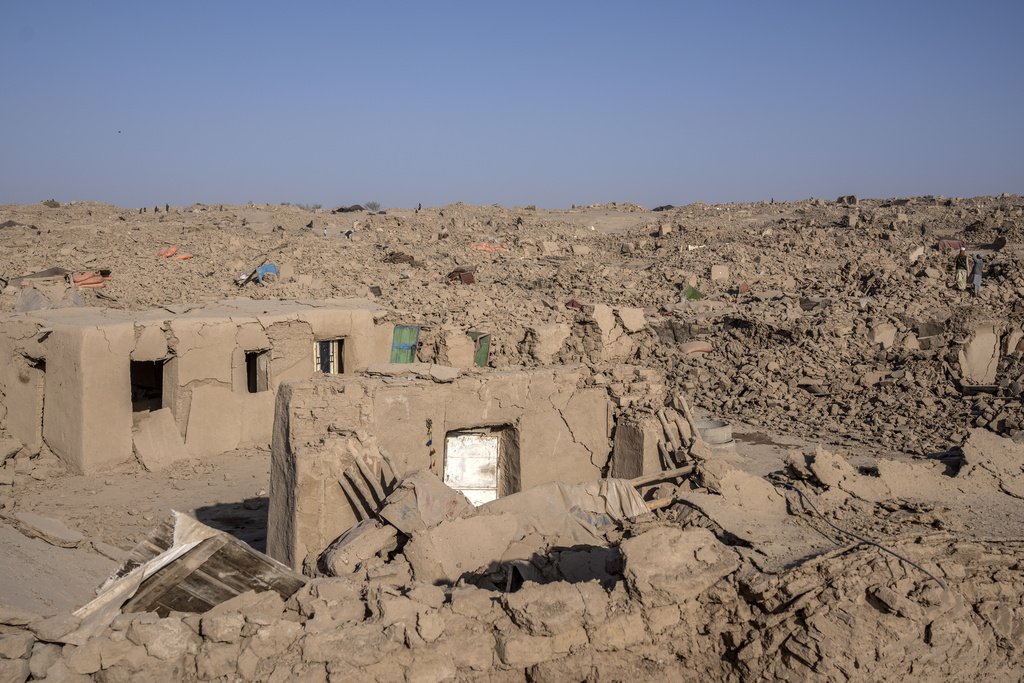Following Consecutive Earthquakes, Afghanistan is Becoming The Epicenter of Epicenters
Afghan volunteers sifting through the ruins of stone houses. Photo: AP Photo/Ebrahim Noroozi
This Wednesday, a third earthquake struck northwestern Afghanistan, a mere days after two powerful tremors resulted in over 4,000 deaths and injuries. All three earthquakes reached a magnitude of 6.3, resulting in the declaration of a state of emergency by the Taliban Administration.
The recent shock was ten kilometers deep and 28 kilometers outside the nation’s economic and cultural capital, Herat City. The tremor triggered a landslide that blocked the main Herat-Torghondi highway.
Positioned between numerous fault lines, Afghanistan frequently experiences high seismic activity due to movements of three nearby tectonic plates.
“Earthquakes in Afghanistan and its surrounding regions are common,” according to the US Geological Survey. “Earthquakes in western and central Afghanistan are primarily influenced by the northward movement of the Arabia plate relative to the Eurasia plate.”
Prior to the three most recent earthquakes, the nation was still reeling from a 6.5 magnitude earthquake that struck the Eastern Province of Afghanistan, Badakhshan, and Pakistan in March 2023.
Within the past year, Afghanistan had over 250 quakes, and large mainshocks frequently strike the Hindu Kush region of Afghanistan.
In 2002, a 7.4 magnitude earthquake hit the mountain range, causing over 1,200 deaths. Such frequency and intensity of these quakes are due to the location of the range “near the margin of the colliding Eurasian and Indian tectonic plates,” says NASA Earth Observatory.
The remains of destroyed buildings and houses in the Herat province. Photo: AP Photo/Ebrahim Noroozi
Alongside the geographical vulnerability of Afghanistan, much of the infrastructure is unable to withstand the violent tremors.
“Afghanistan is particularly vulnerable because the buildings there are not earthquake-resistant," Dr Brian Baptie, seismologist from the British Geological Survey, told BBC. "They tend to be built of timber or out of weak concrete."
The proximity to mountainous regions places villages and homes at risk of landslides caused by tremors. In June 2022, a 6.1 earthquake flattened stone and mud-brick houses and killed at least 1,000 people.
As a result, citizens contend with the fear of displacement and death.
After three consecutive earthquakes, some citizens opted to live in tents and sleeping bags instead of their houses. Makeshift homes made of out sheets and string are scattered across the city’s Great Mosque, setting up shelters with the uncertainty of returning to their homes.
“Disaster on top of a disaster,” said the World Food Programme head of communications, Philippe Kropf, told Reuters. “We have 50 million people who do not know where their next meal will come from.”
Due to the escalations of attacks between Israel and Hamas on Oct. 7, responses from the international community towards the Afghanistan earthquake have slowed down. In addition, directly dealing with the Taliban government has garnered hesitation among nations.
As a result, hospitals struggle to make ends meet, nursing an influx of injured patients while relying on non-governmental assistance.
“340 patients in the regional hospital,” Yahya Khalilah, Doctors Without Borders head of programmes in Afghanistan, said. “Many are in the tents set up by MSF because even though they could be discharged they don’t have homes to return to.”
Suggestions, such as reconstructing schools and infrastructures and efficient disaster preparation, were proposed by the Global Faculty for Disaster Reduction and Recovery to reduce the impact of high seismic activity. However, with the war-torn nation and foreign countries hesitating to lend assistance, Afghanistan would remain more vulnerable to future natural calamities.


